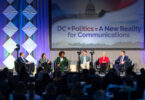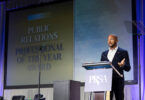I don’t consider myself a trendsetter, but I am an early adopter — Facebook, Twitter, YouTube, LinkedIn, Flickr and, most recently, FourSquare (I’m checking into places and getting “points” for no reason at all). I’d have an iPhone if I could type on it, and I’d love an iPad, despite its name. I’ve also been accused of being addicted to my “CrackBerry” on more than one occasion.
Perhaps that’s why the study released yesterday by the Pew Internet & American Life Project caught my eye. It found that U.S. high-school girls typically send and receive 100 text messages a day … double the average of all teenagers.
Interesting … but not really surprising if you know a teenage girl. What was surprising, however (no, not that 87 percent of teens who text keep their cell phones next to their beds overnight) were the subtleties of teen communication that this study uncovered. In an interview with Reuters, study author Scott Campbell said focus groups conducted by Pew found that, while boys don’t typically punctuate their texts, such nuances are essential for girls.
“If a girl puts a period at the end of a text message (to another girl) then it comes across as she’s mad,” Campbell explained. “They have these practices because they’ve learned that texts can lead to misunderstandings. It’s a deliberate thing and it’s also part of a culture that’s interested in differentiating itself from adult culture.”
This piece is important for public relations and communications professionals to understand and remember. Effective use of new and social media must go beyond simple engagement; it must build relationships based on mutual understanding and shared frames of reference.
Let’s face it; social media is a fragmented, frenetic way to engage audiences. In no time flat, I can post an idea or question and get instant feedback — or better yet — get connected to someone else, a new acquaintance. If I need a tutorial, I can instantly search YouTube and find a post by some subject matter expert to serve my need. My eyes, ears and doors are opened a hundred times more than ever before.
As I’ve learned more about the social media space, I better understand how to interact with audiences. Social media tools are driven by technology, and the tools help with delivering messages. But being effective also means being germane.
They key is to engage, interact and communicate relevant and timely information. Once a relationship is established, it must be cultivated — whether it’s in the virtual world or the real world. You know that coworker who sits next to you and clips his nails while conducting a 30 minute call on his cell? Ask him who he follows and what’s his @ name. You may be surprised.
As challenging as it is to work in this environment, we simply must include social media among our public relations tactics. Even if you can rely on a junior person to do the nuts and bolts, you must learn and understand the intricacies yourself. Senior professionals cannot afford to dismiss this phenomena, or delegate the responsibility to a “Twit-tern” and expect that it will managed appropriately and well.
If you’re a newbie, get out of your comfort zone and give it a try. Evolution is inevitable. Put on your creativity hats and engage the brave new world.
And remember to leverage that engagement whenever you can to develop beneficial relationships based on mutual understanding. Your social media efforts will be more successful for it.
Kathy Nelson Barbour, APR (@KathyBarbour), is a PRSA National Board Member and Communications Program Manager for the Mayo Clinic.







This is a great reminder to know your audience, Kathy. It is still crucial to do this even if you think we all use the same tools now to communicate.
Favorite thought: “Effective use of new and social media must go beyond simple engagement; it must build relationships based on mutual understanding and shared frames of reference.”
@creativetypes
— Amy Lyn
I agree with your assertion that even though one has hired someone who may have a higher understanding of social media than oneself, it is still important to keep up with the concepts of the media as a boss or manager. At my position, it is my job to handle pr on the nuts and bolts level for our organization, and it is often frustrating when my boss seems lost when I try to explain the value of what I am doing with Twitter and Facebook (he’s “old school” as they say). I do give him credit for allowing me to pursue these outlets for exposure of the foundation, but I wish he would take a little more time to understand it.
-Jes Judy
Texting is an essential message platform that has been largely neglected in corporate communications. Colleges use texting to share critical information about incidents on campus and public health information. Politicians — President Obama, Governor McDonnell and numerous 2010 candidates — have effectively used text messages to share information with voters, receive feedback and deliver GOTV information on election day. Considering there are more cell phone users than internet users, those in marketing and advocacy communications should evaluate texting as part of the marketing mix. Being mindful of punctuation of course.